This article will take you on a tactical journey through the strategic masterclass of Roger Schmidt at Benfica. With a keen eye for detail and a penchant for innovative tactics, Schmidt has left an indelible mark on Benfica’s playing style, shaping them into a formidable force in Portuguese football. We delve into the tactical intricacies employed by Schmidt, exploring his formations, pressing strategies, and player roles that have been instrumental in Benfica’s quest for success. Join us in unraveling the tactical brilliance of Roger Schmidt and delving into the captivating world of Benfica’s football philosophy.
Build-up
Low Build-up
In the low build-up, Roger Schmidt sets his team up in a 1-4-2-3-1 formation.
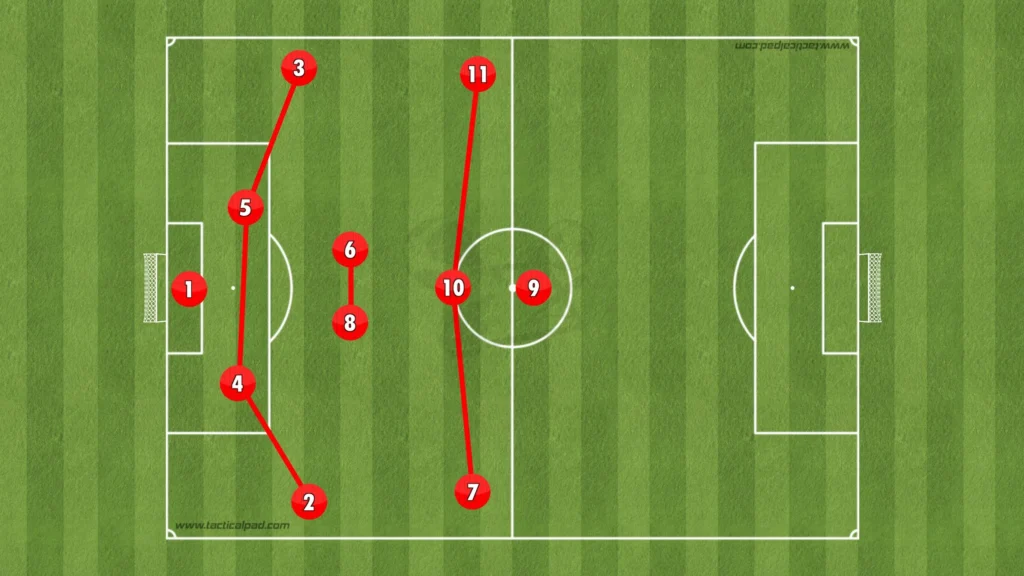
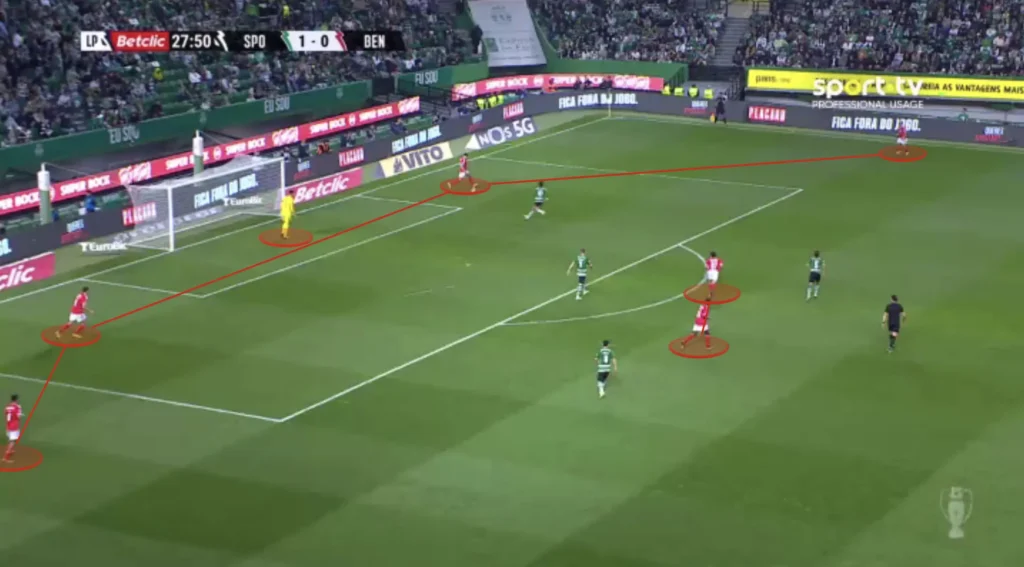
The wingers usually start wide and come in when the play is started. This often gives Benfica numerical superiorities in the midfield, which will help them beat the opposition’s press.
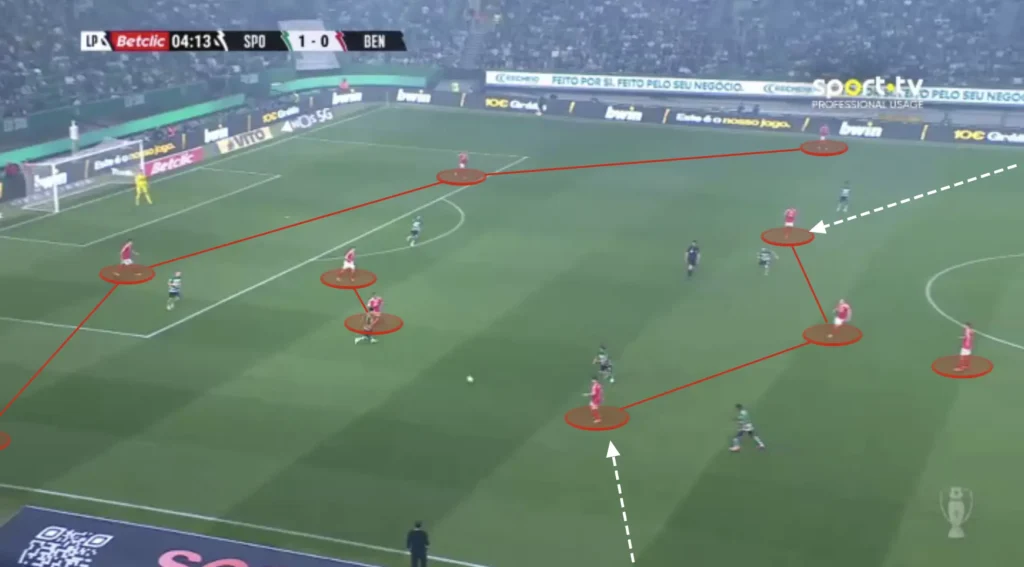
Goal-Kicks
From the goal-kicks, a holding midfielder(usually João Neves) often comes into the penalty area and picks the ball up from the goalkeeper.
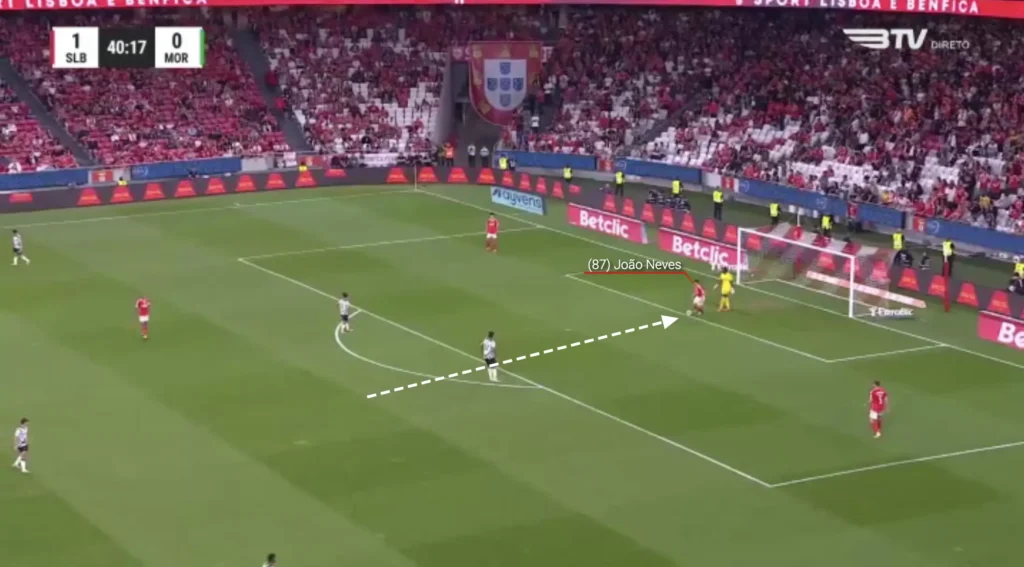
This forces an opposition midfielder to push up and press, which opens more space in the midfield, allowing a Benfica midfielder to drop into this space and receive the ball. Neves is also better on the ball than the Benfica goalkeepers and will be able to play longer passes from this position with higher precision.
Sometimes, when their build-up does not work, Benfica go long. The players set up in the 1-4-2-3-1 formation close to the halfway line, with the goalkeeper looking to find the winger with a long ball. The striker will make the run in behind while the midfielders look to be ready for the second ball.
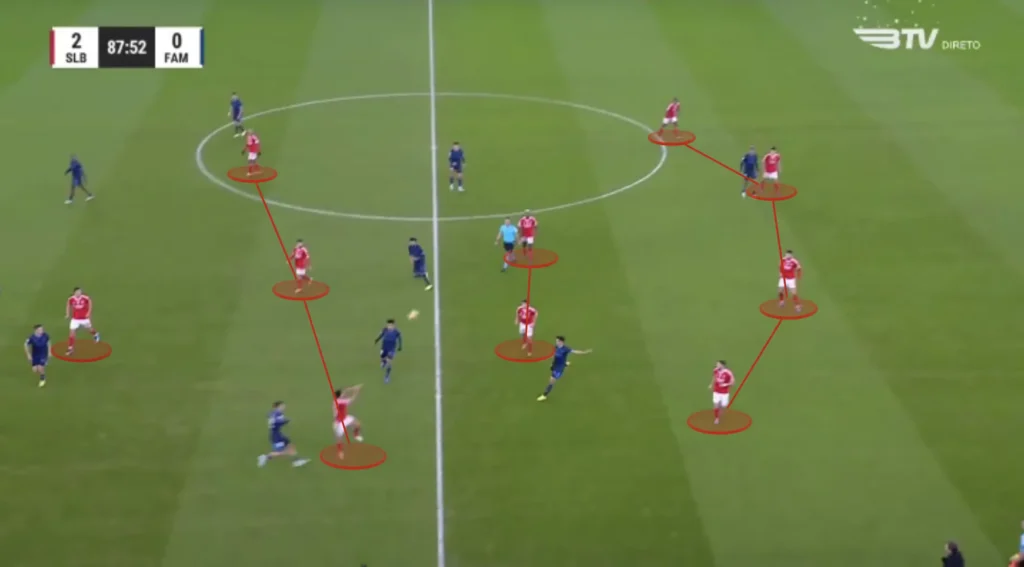
High Build-up
In the high build-up, Schmidt’s Benfica uses a 1-4-2-4 formation, with the wingers coming in and the fullbacks pushing up.
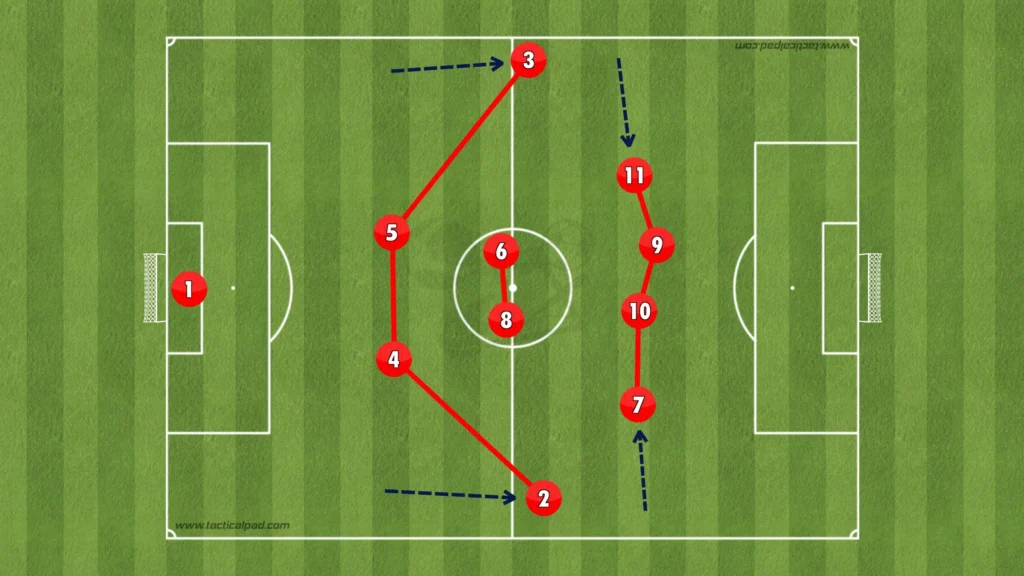
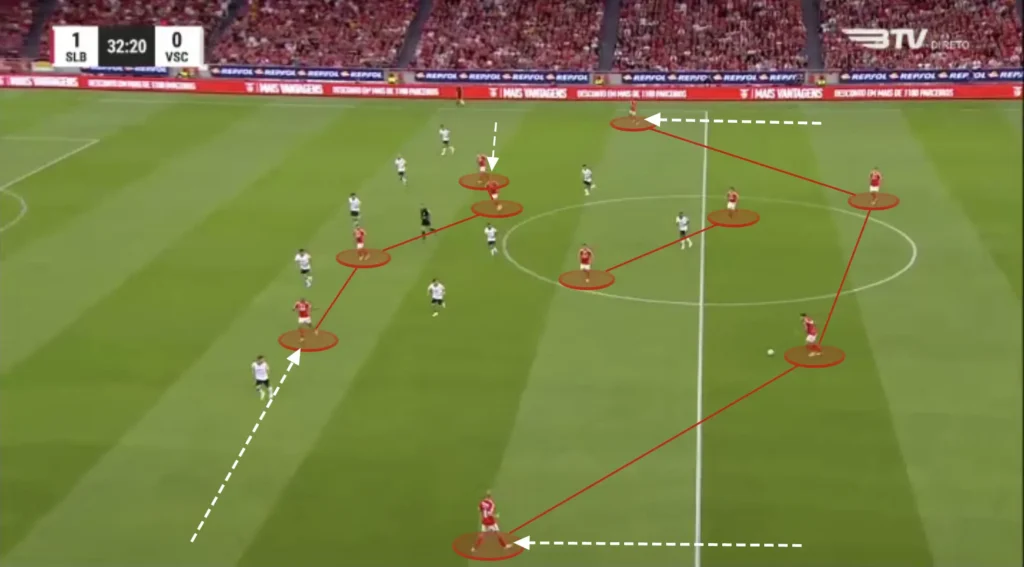
The front four players are usually very fluid and move a lot to create problems and confusion for the opposition. The wingers will, for example, sometimes come deeper, creating a 1-4-2-2-2 formation:
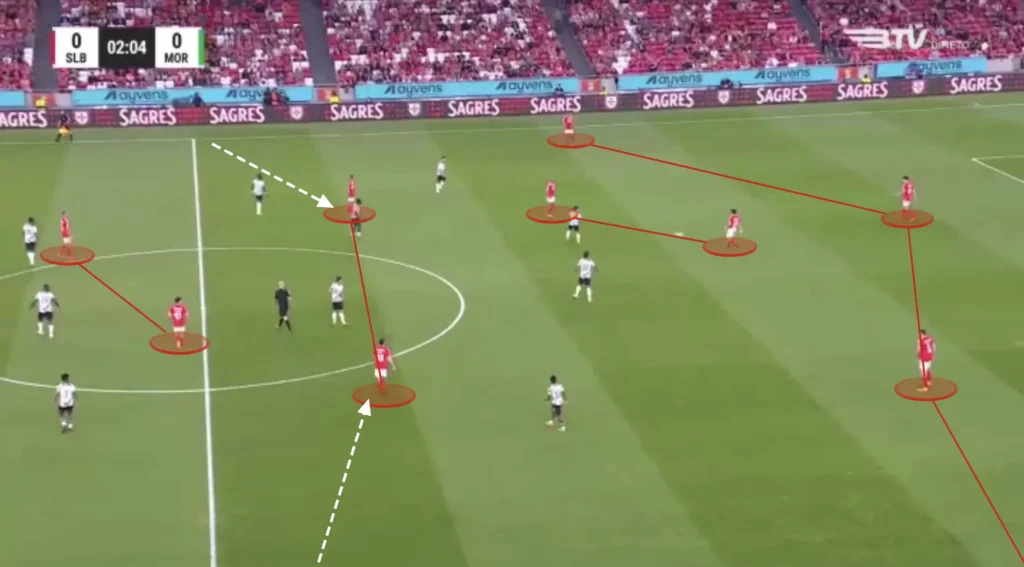
Sometimes, a striker will drop and play more as a number-ten:
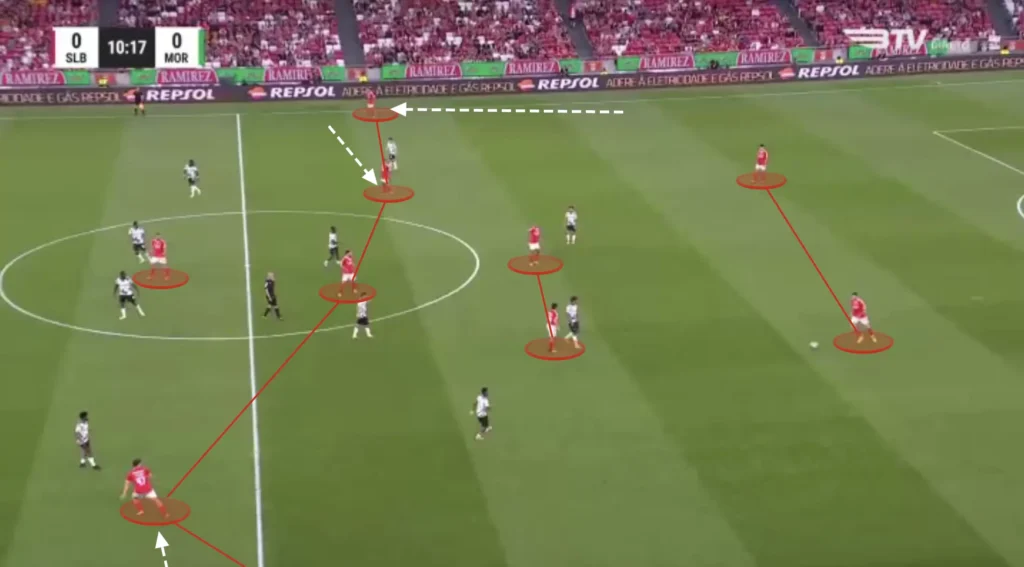
Having only two players out wide and the rest in the middle creates more options in the center and less space between the players. Roger Schmidt likes this because he prioritizes playing through the middle. He needs one player out wide to pull the opposition apart while the rest create numerical advantages in the midfield areas. This builds good conditions in defensive transitions, allowing more players to press when they lose the ball. Another purpose for keeping many players in the middle is to shorten the distance between them. This shortens the length of the passes, which naturally shortens the time between passes. This means the opposition players will have less time to push up and press, giving the Benfica players more time and control.
Changing Formation
Benfica often rotates in their build-up, creating new formations to confuse opponents. They adapt to their opponent’s formation to create numerical advantages in different areas, allowing them to beat the defense and score more goals. Their most frequent formation change is to drop one of the holding midfielders, usually João Neves, into the backline, creating a three at the back. Benfica often do this when playing against two forwards. Creating a 3v2 with the backline against the opposition’s forwards, instead of a 2v2, means that one center-back will be free, allowing them to beat the opposition’s forward line.
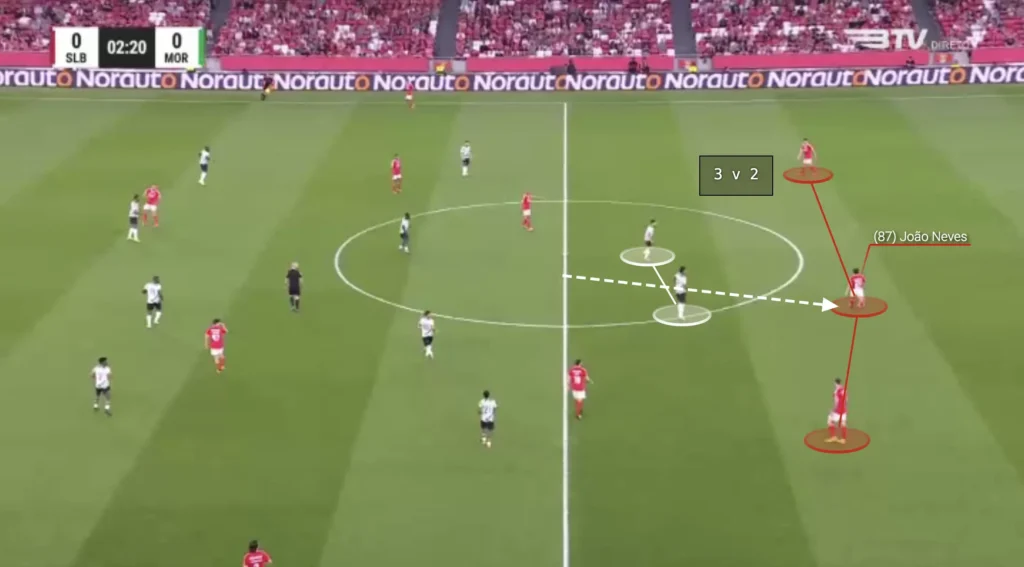
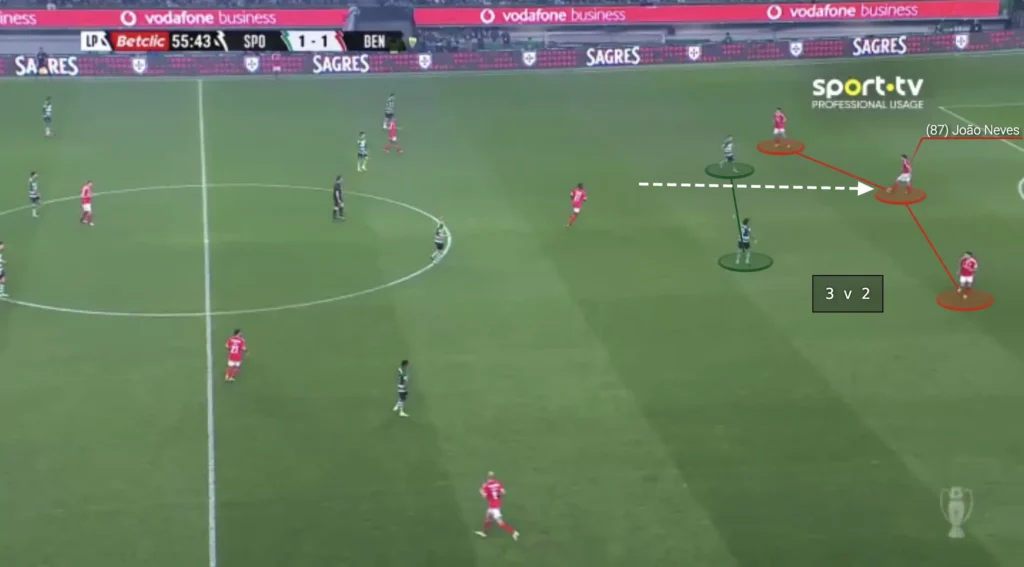
Balls in Behind
Benfica do not shy away from using the early through-ball in behind the opposition’s backline. The attackers constantly make runs in behind when the Benfica midfielders or defenders have the ball. This constant threat prevents the opposition from playing with a high backline and closing the space between the lines. Instead, they have to drop the backline and protect the space in behind, opening the space in the middle for the Benfica midfielders to exploit.
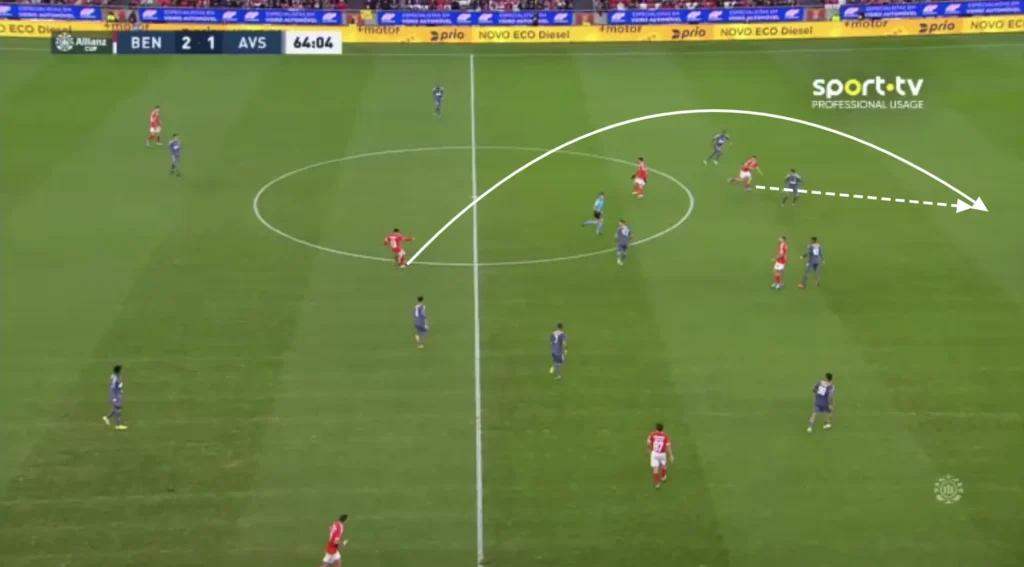
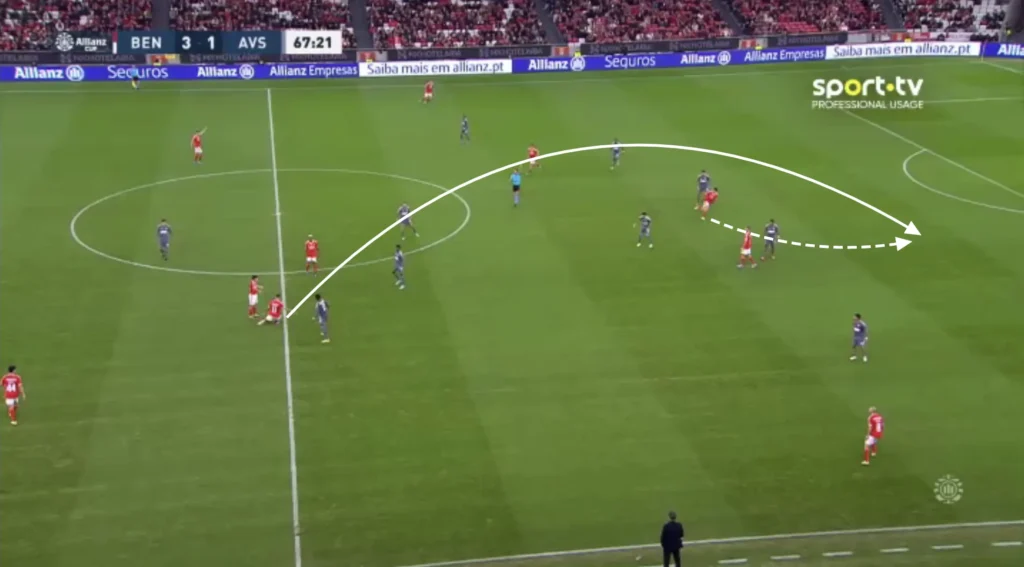
Numerical Advantages
Another massive aspect of Benfica’s high build-up is their ability to create numerical advantages against the opposition’s defensive line. Their front six naturally becomes numerically superior against the opposition’s backline, which they are great at taking advantage of.
When the defending team is positioned on one side, the weak-side fullback becomes vulnerable to the long switch of play due to the 1v2 against Benfica’s winger and fullback. Schmidt’s team often capitalizes on this by getting the ball to the attacking fullback and creating many opportunities from 2v1 situations on the wing and in the half-spaces.
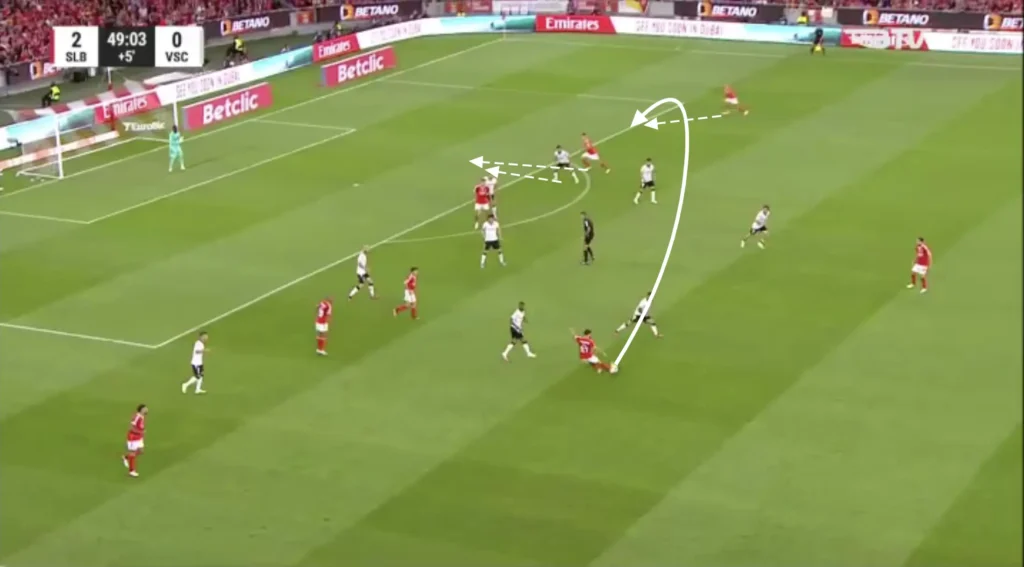
Defending
High Press
Roger Schmidt’s Benfica presses the opposition high when possible and does so in a 1-4-1-3-2 formation:
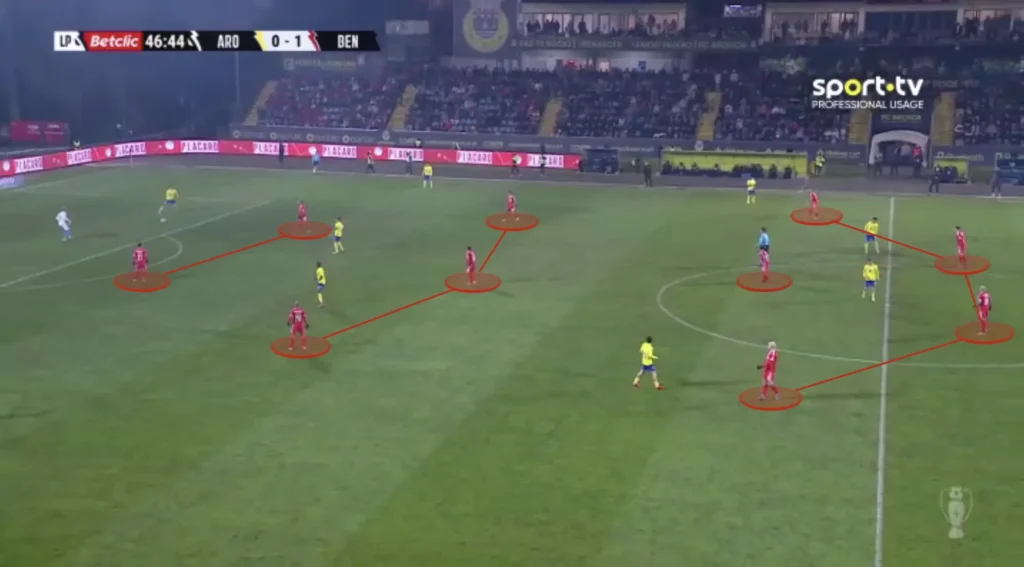
Many teams use a 1-4-3-3 formation in the build-up, which would give them a numerical advantage low down against Benfica’s six midfielders and forwards. Roger Schmidt solves this by leaving the opposition’s weak-side fullback open and going man-to-man on the rest of the players when the ball gets played to one of the sides. The ball-side wide-midfielder pressures the opposition ball-side fullback, the holding midfielder pushes over on the opposition ball-side number-eight, and the weak-side wide-midfielder tucks in to control the opposition weak-side number-eight.
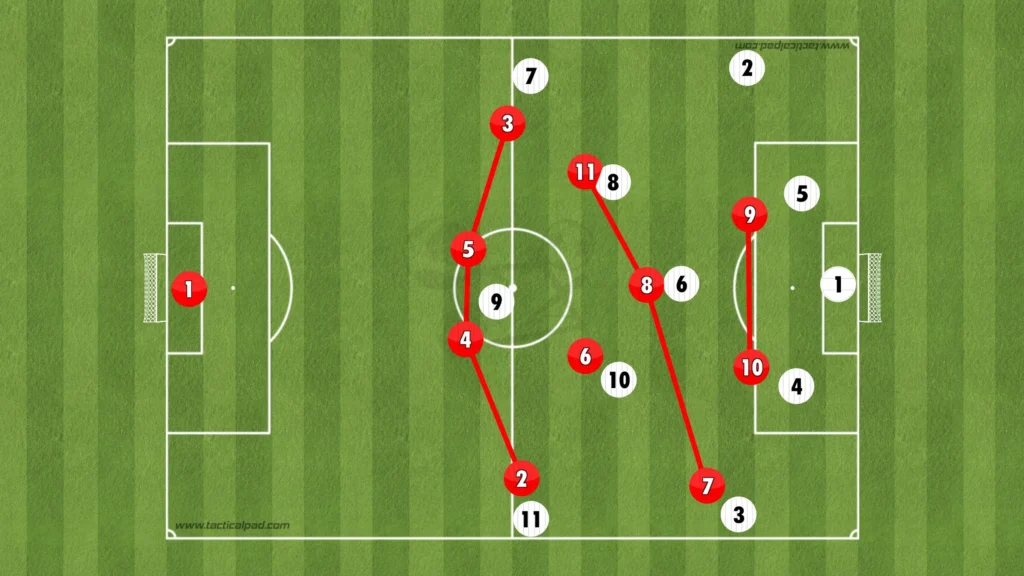
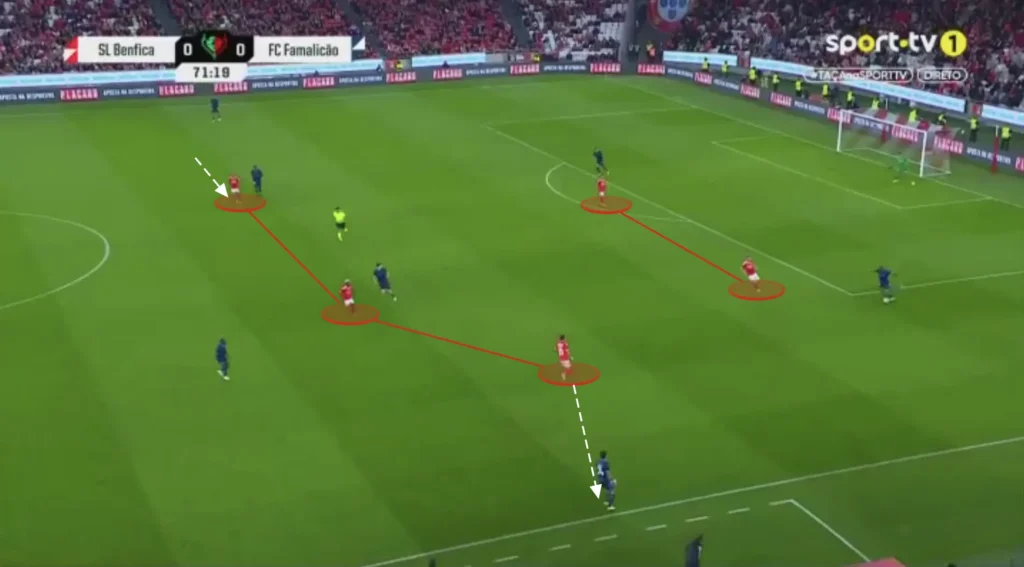
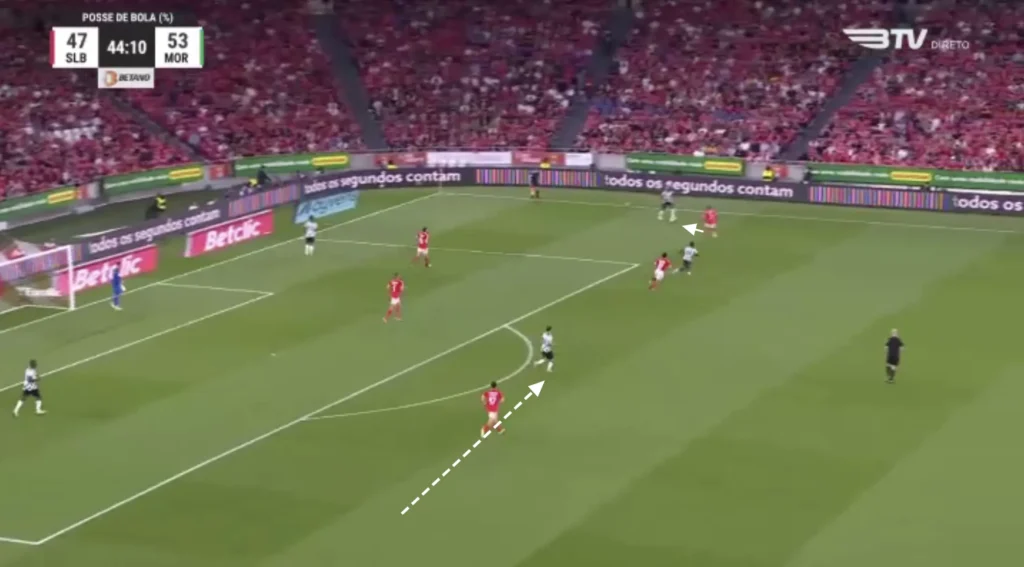
They can do this because the pass from one side to the other is too difficult for the ball-holder to make, and if he makes it, the Benfica players have enough time to come across and win the ball. This system also gives Benfica a numerical advantage against the opposition striker, giving them more control when defending long balls.
Low Press
Roger Schmidt’s Benfica uses a 1-4-4-2 formation in the low press. They look to set up in a mid-block, always trying to close the center, forcing the opposition out wide. Benfica always stay compact, mainly closing the space between the midfield and backline.
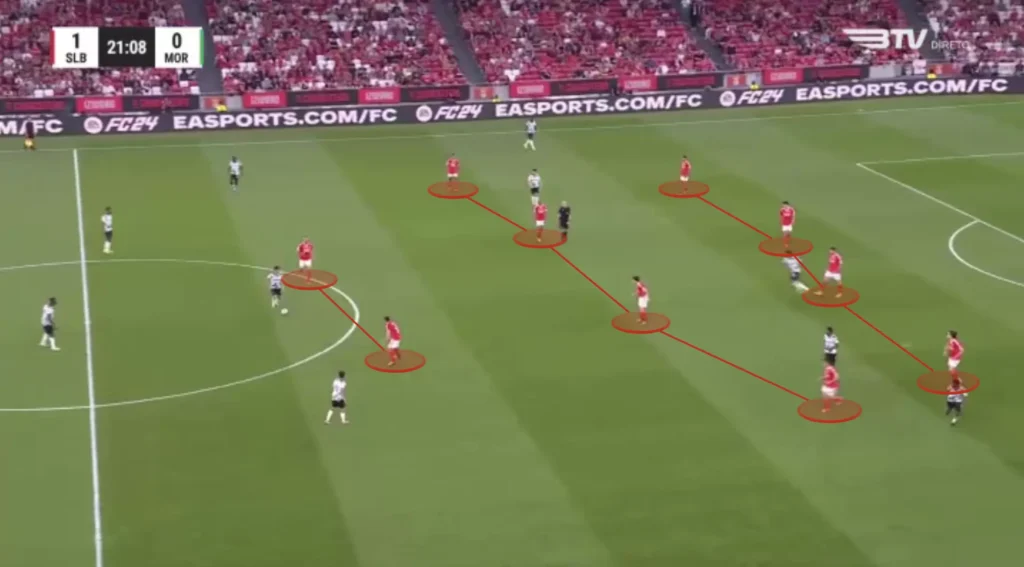
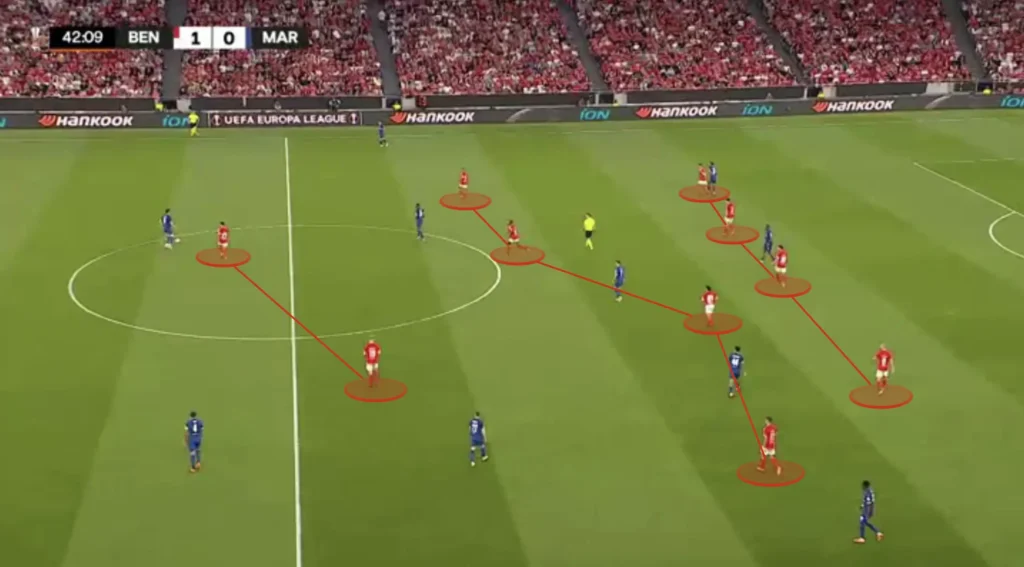
They also look to squeeze the pitch when defending. This means constantly pushing the team up as much as possible. Every time the opponent plays a slow, sideways pass or a back pass, Benfica’s first line of pressure pushes up, with the rest of the team following to stay compact. When the next pass comes, they push up even more, forcing the opponent back even more. They do this because it pushes the opponent further away from Benfica’s goal, making it harder to create chances.
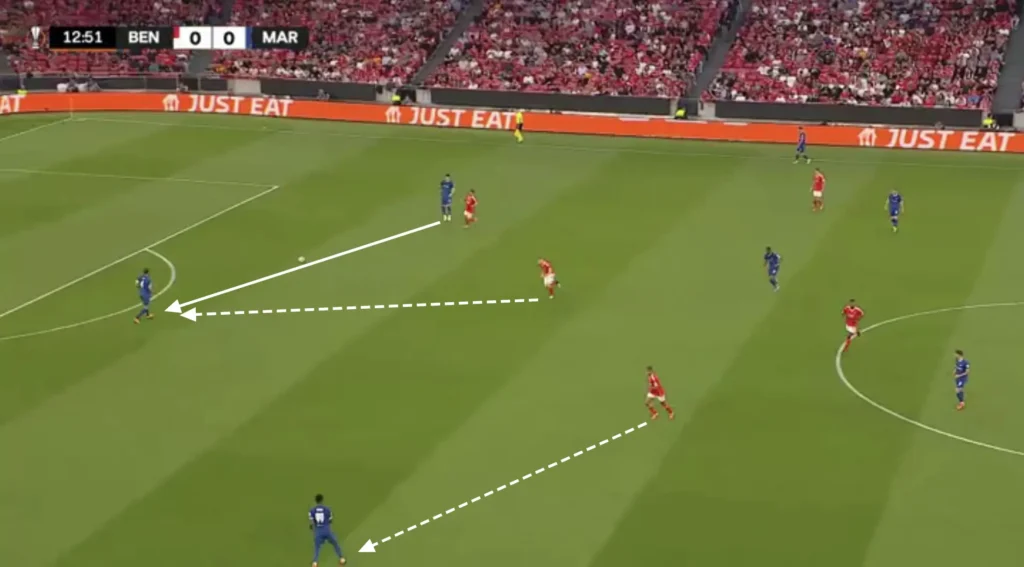
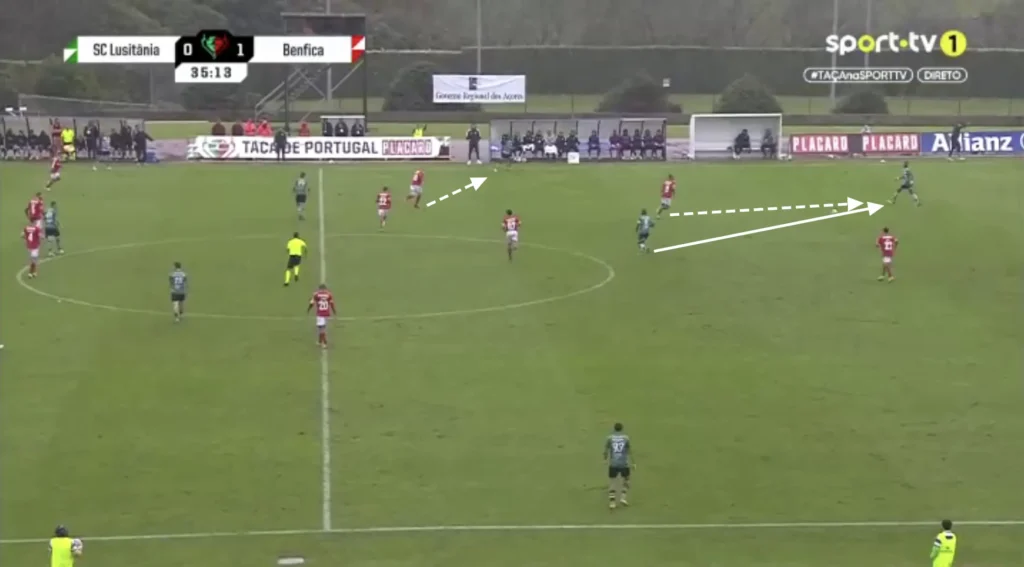
Transitions
Defensive Transitions
Positioning many players centrally, creating a numerical advantage in the midfield, creates good conditions in defensive transitions. Many players close to the ball after losing possession means that many players can work towards regaining possession. Therefore, Benfica often successfully regains possession directly after losing it.
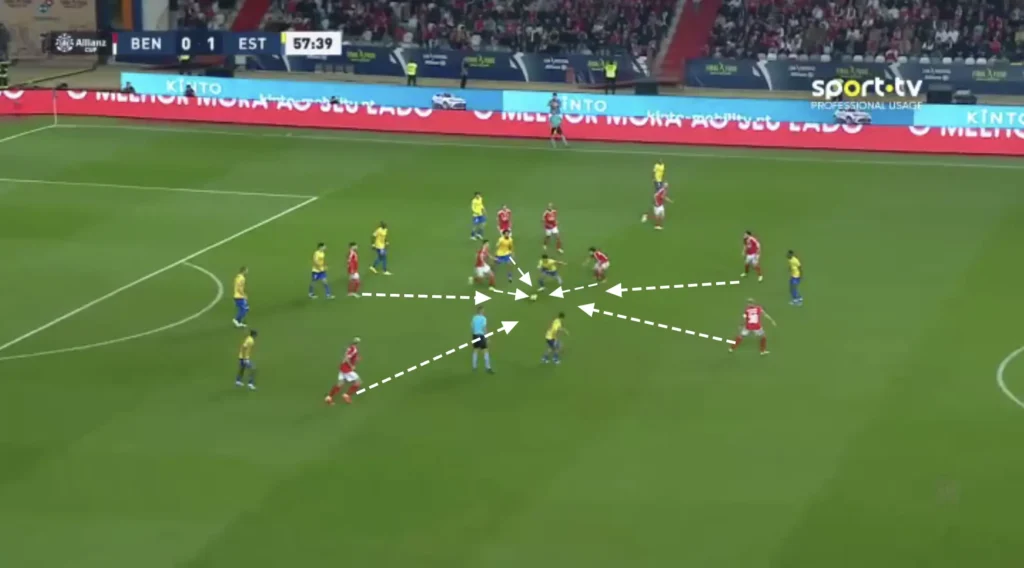
Offensive Transitions
Roger Schmidt also wants his team to counterattack in their offensive transitions. They do this with a high tempo, often attacking the spaces between the center-backs and fullbacks. In addition, keeping many players centrally while defending enables them to incorporate more players into the counterattacks.
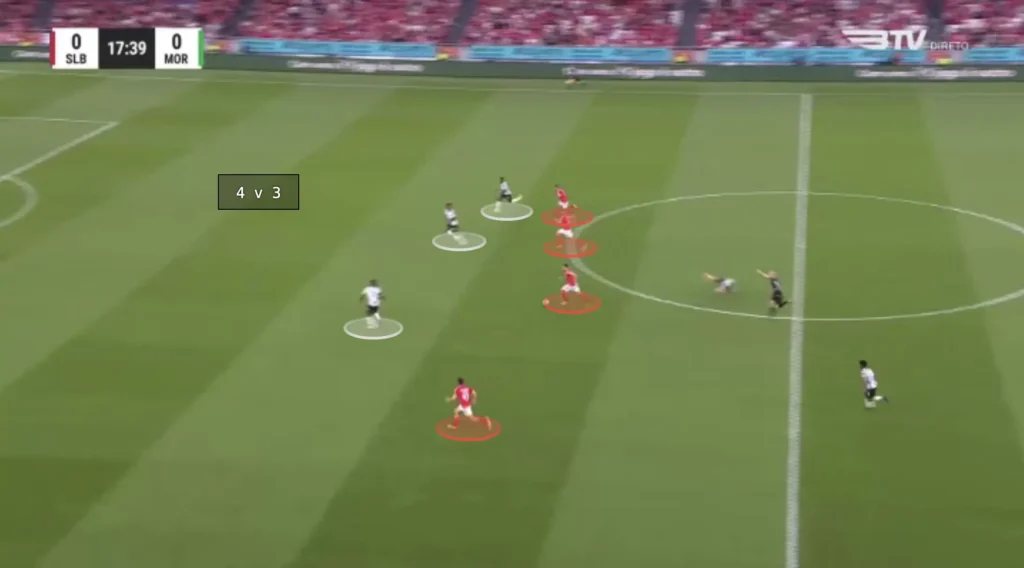
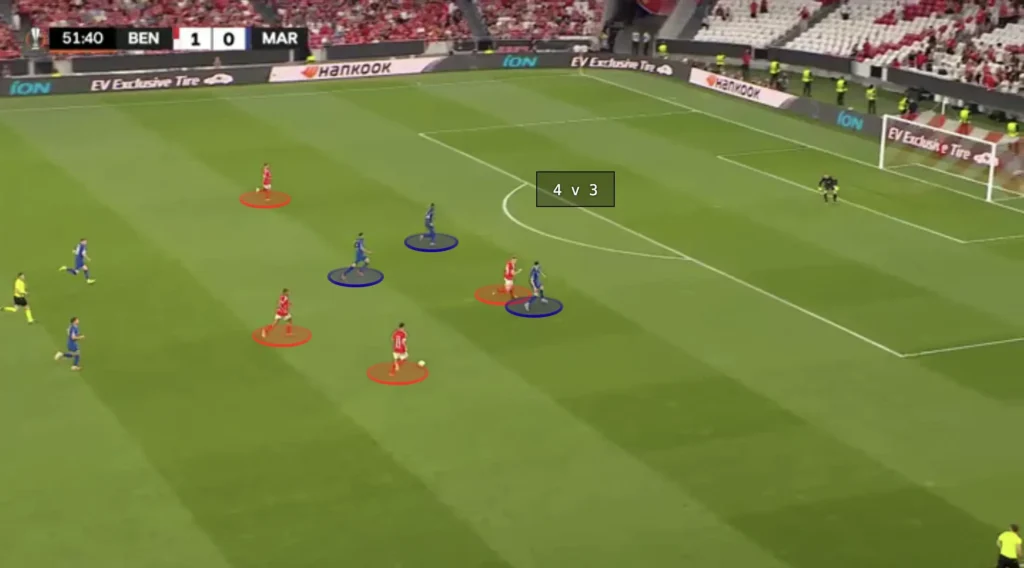
Final Thoughts
In conclusion, this tactical analysis has provided a comprehensive insight into the strategic nuances used by Roger Schmidt at Benfica. We have gained a deeper understanding of Schmidt’s tactical approach by thoroughly examining formations, player movements, and key principles. His emphasis on high pressing, dynamic attacking play, and positional rotations has shaped Benfica into a formidable force in Portuguese football. As Schmidt implements his vision and fine-tunes his tactics, Benfica fans can expect an exciting journey filled with strategic innovation and competitive success.
